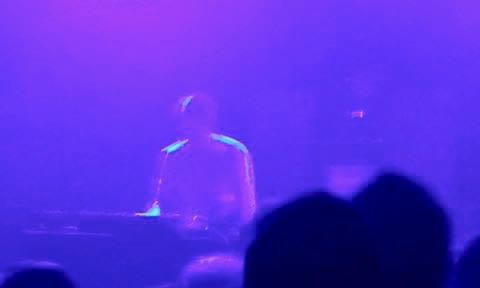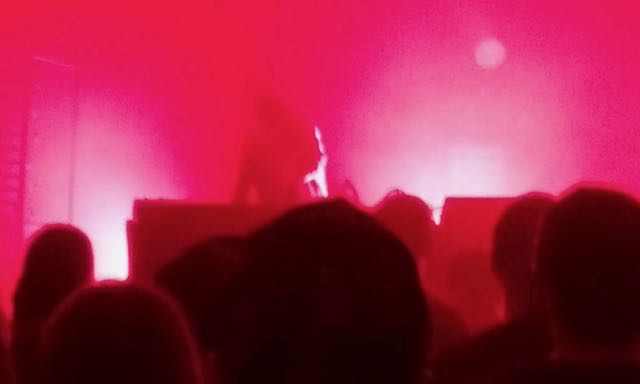In the Music Hall
Clark at Neumos
by Ada Fetters
Clark is an indie electronica artist based in England. He doesn’t often make it to the U.S. I have enjoyed his work for years, especially the ethereal Iradelphic and layered Body Riddle and was thrilled to see that he was not only touring the U.S. but was hitting Neumos in Seattle.
Neumos is the largest music venue on Seattle’s Capitol Hill. The hall itself is not large, but the venue also seats customers in mezzanine bars overlooking the hall and stage. Many people watch from the upstairs bars, which account for much of the 600 capacity.
I was on the main floor, several standing rows back from the stage, close enough to see the individual LEDs for the light show.

|
Com Truise was the headliner for the tour, Clark was under him, and there was a warm-up act under them both. Thus I was expecting very little when a man stepped on stage behind a bank of wires, computers and other equipment. He was a slender, tapered silhouette against the colored light and fog. Without even announcing himself, he began his set.
The first few songs weren’t anything I’d heard before, but I was enthralled from the first big bass drop. First my head turned, then my synapses fused. The music sounded like it was made for AI’s, layered and complex and full of unexpected circuits.
"Why haven’t I heard of this person before?" I wondered, still under the impression that this was a mysterious warm-up act. "He’s made a new devotee anyway." Then, while a looping electronic choir wailed over a throbbing bassline, "I feel kinda sorry for Clark. This is the highlight of the night. There is no way he can top this."
When I realized this was Clark — I finally recognized Herzog — it was like discovering the guy again for the first time. He was not riding on his name or even the learned associations I had made with him from his albums. Live, Clark is fond of high, floating keyboards that shift up and scream and take mind-bending turns. They are always in tune but never what the audience implicitly expects from the preceding series of chords. Then he brings out nosedive bass that shatters the earth when it hits.

|
Let no one say that electronica artists aren’t musicians or that they aren’t talented or that "they just hit Play on a computer." It isn’t true. Clark’s sound was so different live than in the studio that it feels unfair to compare the versions he gave his audience at Neumos to the album tracks. His face was obscured, but throughout the set he was busy at his bank of equipment, spider-handed like a pianist.
This is how you know a musician is truly talented. Even when utterly unfamiliar the music goes “straight to your heart like a cannonball,” as Van Morrison would say.
Cannonball, indeed. I was standing right under a stack of ceiling speakers and was nearly bowled over by the bass.
In "Cannonball," Morrison expressed annoyance with the “grapevine” telling audiences what is popular or cool. If people show up for the sake of appearance, nodding and clapping when they are supposed to, they are still “hearing it through the grapevine” instead of connecting with the music. Then the show is "just like talking to yourself," as Morrison put it.
I am unsure whether Van Morrison would enjoy electronica. However, he would certainly understand why Clark came on stage obscured by light and fog. He would also understand the experience of a listener who went in blind and was enthralled by the music itself.
At the end of the set, the lights dimmed, the fog cleared away and Clark turned to walk off stage. The audience let out a huge, steady cheer for him and he turned around. I was close enough to see a quick, shy smile on his face. He put his hands together and bowed.
At that point we could see the man behind the show. He kept glancing up, definitely not just talking to himself as he gave us one last trip.
Copyright © 2017 by Ada Fetters

